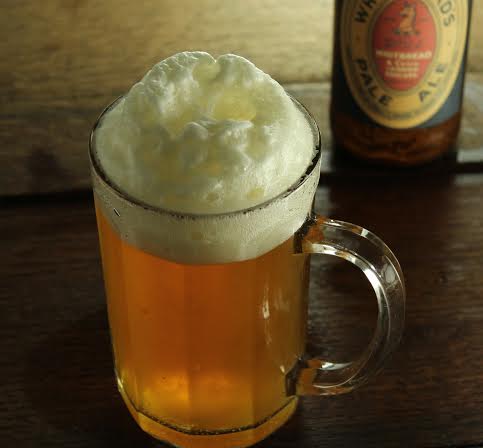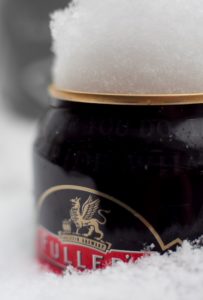 Chores. Garden chores. The pruned willow is just about casting enough shade for its six month tour of duty, leaning over me as I sit and sweat and drink a beer. And, about thirty feet away, I built a nice small patch of salad-y things this week radishes, red and green lettuce. Stuff getting done. That’s something, quite a something. For a place that had three frosts under two weeks ago. Then I remembered I have rabbits. Not mine. The wild bunnies of the neighbourhood. So… now I need to box in the patches with walls and a cage top. Perhaps a hinge top will be introduced. Not having chicken wire dig into your neck once the top slips as you gather in the harvest? That’s innovative. Innovation born of not thinking something through fully in the first place. That’s my style.
Chores. Garden chores. The pruned willow is just about casting enough shade for its six month tour of duty, leaning over me as I sit and sweat and drink a beer. And, about thirty feet away, I built a nice small patch of salad-y things this week radishes, red and green lettuce. Stuff getting done. That’s something, quite a something. For a place that had three frosts under two weeks ago. Then I remembered I have rabbits. Not mine. The wild bunnies of the neighbourhood. So… now I need to box in the patches with walls and a cage top. Perhaps a hinge top will be introduced. Not having chicken wire dig into your neck once the top slips as you gather in the harvest? That’s innovative. Innovation born of not thinking something through fully in the first place. That’s my style.
Beer news? Beer news! It’s a big week this week. First up, the Craft Brewers Conference 2022 ended up having a couple of note worthy twists this week: a fine beer got runner up to the runner up where the runners up don’t actually exist aaaaannnnnnnnd… it was a Covid-19 super spreader event. There’s not much you can say as not one saw it coming… except Robin:
So uh…everyone at cbc just not wearing masks huh…
Not hard at all, doing the right thing. And if that wasn’t enough, plenty of folk wrote have thoughts about the #1 third place for an American classic. Andres wrote the thread o’the week on process. We also got juries of beer fans standing up to snarkily defend the indefensible verdict… the “not credible“*… because “they’re all world class experts of course“… which I take to be a dig but it might not be a dig. AJT added a useful note:
Reminds me of the story that John Keeling tells about when he was at Fullers and judging in the US – their ESB was knocked out of the ESB category for being out of style…
In longer form, we had omni-directional finger wags from Jerard Fagerberg and… my pal Lew who may want to recognize the third possibility:
But as I say to people who complain about the Electoral College, if you don’t like the way the rules are, work to change them. If you’re a brewer who thinks that every medal in every category should always be awarded, because we’ve reached the point as an industry where common levels of excellence are understood and achieved – or, hell, just because – then get organized, find other brewers who feel the same way, and get the rules changed. Or don’t. But if you don’t agree with it, and you don’t do anything about it, you’re just going to be pissed when it happens again. Savvy? Now get out there and brew, or drink, and stop worrying about this. There are a lot more important things, even in beer.
GET OFF HIS LAWN!!! Note: Electoral College references are akin to Godwin’s Law. And that third possibility? For me, be like most people and realize these events are just low level oddly structured fun that are focused on brand promotion. No one loses an eye. Competitions are just a nice side-hobby in the beer world.
On a point much further along the parabolic niceness scale, Lily had her essay on a possibly perfect pub published in Pellicle this week, the story of the Salutation Inn of Ham, Gloucestershire which comes with a few extras:
The pub is welcoming and homely, with low ceilings, pew-like wooden benches, and a fireplace lending welcome warmth to the pub’s two front rooms in winter. The bar is lined with taps and hand pulls pouring beer and cider from across the South West—including the pub’s own brewery adjoining at the rear—as well as the trusty and ubiquitous Guinness… The walled garden which houses the pigs is dotted with apple and pear trees, and the odd damson. The pigs, raucous and rambunctious as we step through the door in the elderly wall, are fed on a mix of apples, cheese curds, and occasionally pellets. Once the private garden of the Berkeley estate manager (the castle’s estate covers 6,000 acres across the local area), it is shown on early 19th Century maps surrounded by orchard after orchard—a cider history now long gone.
Traveling much farther, Jeff made a flash visit to Norway which I worried was was going to be a bit of a drive-by so it was comforting to see the both Lars and Knut gave it the thumbs up. Still… it was a bit of an American abroad with the experience being too much or too little like the USA:
… you might mistake it for a pub in Ohio. Lots of hazies and other IPAs, some barrel-aged stouts, assorted pales. They even have Guinness … Those styles drive the same kind of drinkers in the US, but the difference is that in America they are dwarfed by the number of “regular” craft drinkers… We go through different developmental stages, and the first one is imitation. Norway has yet to find what they like on their own terms. I expected farmhouse brewing and especially kveik to be quite visible, yet it’s not. In fact, when people at the beer fest asked me about my plans for Norway and I mentioned Voss, 80% of them had never heard of the farmhouse tradition there… On the other hand, I’ve been impressed with the beer in general.
Ah, that old assumption that a land matches one’s expectations. Man is indeed the measure of all things. I’ll still probably just stick with Knut’s or Lars’ take on their own homeland. Local knowledge. As Stonch wrote of Prague this very week:
Over the years I have benefitted enormously from the writing of Evan and also Max @Pivnifilosof. Evan also once helped me and my mate Dave get tram tickets when we were too drunk to put the coins in the machine
Elsewhere, the problem of payment came up in a discussion at Boak and Bailey’s over the weekend and I clued into something that had not crystalized within my brain bucket before. I was led to a thought only after I wrote this:
…inventive creative writing sure has taken a hit in the good beer world. Payment has never amounted to quality in my mind, often the opposite. Yet it’s becoming more and more the case that it’s either paid for writing that’s pleasant enough or bits and bob that never seem to get enough time to be properly fleshed out. I can’t say I’m ever comfortable, for example, with histories published and paid for by the word – but who even has the time to put in a proper effort as the amateur’s act of obsession? Retirees, that’s who. They seem to be holding up their end of the bargain.
I then thought “why did I write that?” I did so for two reasons. First, I am always reluctant to be disagreeable especially (honestly… not tugging at a dangling thread) with B+B and, second, I wondered whether it was even true. But it is if you look at it this way. Writing for pay puts a meter on the writing. You will get X amount per word or a flat rate but the reality is that you really are putting yourself on a clock. Based on what you are worth per hour rather than whether the writing is any good. Leading to conserving resources, measuring time as well as money. And deadlines.
Screw that. When I was young and fancy free before a few years back, I had all the time in the world to swan about researching obscure stuff about brewing. Not so much given an uptick in very interesting but very demanding work related matters. Hence Martyn and Martin and Gary and Ron and the Tand and any number of others of the golden handshake who are able to research and scribble with a bit more leisure. Interestingly, the abovementioned Lars has written honestly this week about the other side of the coin, my path not taken a decade and a half ago:
I worked hard to set up talks back in September and October and had one month of good income with from that, before covid stopped it all. So now I need to try to restart that, but without spending so much time on it that I miss my book deadline. I got a deal writing articles for Craft Beer & Brewing magazine, which has also helped. The long and the short of it, however, is that less than a year into this I’ve had to start dipping into my savings, and it’s not a great feeling. So while I will keep doing all of the above to produce some money it looks like it won’t be enough.
Lars then shared an interest in readership support. Go read and contribute if you can. I have written it before but it repeats saying: I have every sympathy for someone who has decided to write about beer. For all the money in beer there is very little money in writing about beer, however interesting the topic.
Which leads to a few things. Like the issues of scope creep and expertise extrapolation. Sure, multiple skilled interests are possible – Dave Sun Lee is but one example – but the good folk who are committed to writing for cash have to go out further upon the waters with nets and lines. They give us stories not about beer but about other alcoholic beverages – about boozy seltzers and things claiming to be non-alcoholic beer even though both are so often laced with fruity gaks that defeat any commonality with brewed malt and hops. Where does it lead other than the inevitable high priced craft NA still unflavoured seltzers?!? Tottering towards international economic collapse, that’s where!!! Consider this behind the The Chicago Trib’s paywall, summarized by author Josh Noel this way:
Goose Island is taking Bourbon County into the world of pricey NFTs ($499 each!).
We really need to know no more. Could you imaging chucking away your pay that way? Pet Rocks taught me enough about that sort of thing in elementary school coming up on 50 years ago… though it did allow me the opportunity to post “Sucker juice layered upon the sucker juice!” There. Dots connected. Thanks for walking this path with me. BTW: Josh Noel is just wrong this time:
After digging in, I can see the future where NFTs play a role connecting brands and customers. Especially in beer, where the bond can be strong.
More sensibly, Gary indexed his recent posts on colonial English pubs in India. Excellent.
Finally, what to think about GBH apparently crossing a line and pulling an article about a legal process?*** While it is entirely healthy to be dubious of craft breweries and their ways, a few grabs on social media about the article prior to its removal may help explain why a reasonable cease and desist letter was sent. Consider this:
“[BrewDog CEO/cofounder James] Watt may have tried to uncover this alleged plot by paying a former romantic partner nearly £100,000 ($125,000 USD) in Bitcoin to gather information on ex-BrewDog staff and others who have been critical of him.”
… and this:
“Documents and interviews suggest Watt paid her to help him uncover information about his critics” and “The woman says she did not defraud or harass Watt, and that she does not believe former BrewDog employees are plotting against him. Her lawyers say she will “robustly” defend herself against these allegations” and “Three women who had contact with Ziem say they did not believe her to be part of a plot to take down Watt, and say they suspected Watt was using Ziem to gather information on them.
Contempt of court. It happens. It basically means you are contemptuous of the judicial process. Usually it is raised when someone won’t respect a warrant demanding their attendance but it can also mean that you are not letting the court do its job of fact finding, that you are interfering with the process. You can see how speculation and allegation become restated as fact. I see it now as I did when I saw the story’s brief appearance:
Speculative review of partially obtained evidence to be framed under the unique system of Scots uncodified civil law! Amazing pluck. Plus “… Watt may have tried to uncover this alleged plot by paying…” and “…people he sees as his enemies…” Impugning skullduggery? Heavens!
I was more thinking that there would be a form of libel suit under Scottish civil law due to the assertions of fact exemplified above but The Beer Nut guided me to the other process, the contempt under English proceedings pursuant to a UK statute. Statutory contempt seems to require consideration of whether there is a lack of good faith, if we have “fair and accurate report of legal proceedings held in public” and whether “the risk of impediment or prejudice to particular legal proceedings is merely incidental”… all of which only a judge would determine. Only an actual judge. Lessons hopefully learned.
There. So serious this week. For more, check out the updates from Boak and Bailey mostly every Saturday and from Stan every Monday except last Monday and next Monday, plus more with the weekly Beer Ladies Podcast, and at the weekly OCBG Podcast on Tuesday and sometimes on a Friday posts at The Fizz as well. There is a monthly sort of round up at The Glass. (Ed.: that seems to be dead now.) There is more from DaftAboutCraft‘s podcast, too. And the Beervana podcast. And sign up for Katie’s irregular newsletter, The Gulp, too. And check out the Atlantic Canada Beer Blog‘s weekly roundup. Plus follow the venerable Full Pint podcast. And Fermentation Radio with Emma Inch. The AfroBeerChick podcast as well! And also look at Brewsround and Cabin Fever. And Ben has his own podcast, Beer and Badword (Ed.: …notice of revival of which has been given…) And remember BeerEdge, too, and The Moon Under Water.
*To quote my favourite source, me: “And how can you have a mythical standard second place beer? It not only represents something not present but superior while also being inferior to another not present beer. Both of which (not being present) are not contemporaneously experienced, just somehow recalled.”
**Question: While we are at it… why do we rightly (example) qualify one beer publication as “Ferment, the promo magazine of a beer subscription service” when GBH is rarely mentioned as the promo magazine of a beer consultancy service? Both publish very interesting pieces and both aren’t really “reader supported” but actually subsidized by the non-publication side of the business for, logic dictates, non-publication side of the business reasons?
***And not even related to this continuing weirdness.















